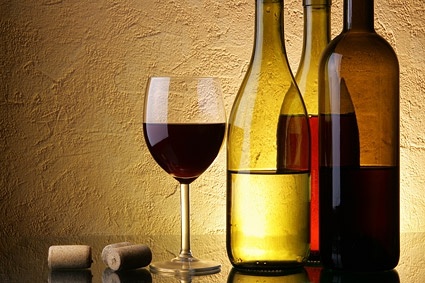So the other day i was able to take part in a 2 hour instructional wine crash course training for free. A lot of knowledge involved specific brands, which is probably not too interesting for the daily peasant like me. However some facts where quite interesting all around, which i’d like to share in this post.
The wine processing
In short, wine is the result of fermented grapes. The process takes sugar and turns it into alcohol, the longer it takes, the more sugar is processed. Consequently, a fully processed wine batch does not have a lot of sugar residues left (longer processing time = less sweet). Furthermore the longer the fermentation takes place, the more complex flavors are created. As far as i know, there are 3 kind of wines – sweet, half dry and dry. Sweet and half dry wine are a result of ending a fermentation process prematurely being more sweet but creating less flavor and are seen as of lesser quality by fancy experts.
The grape
The type of grape has a major influence over the resulting flavor and is responsible for the beverage’s acidity. There are a variety of grapes, some might have a thicker peel. Using those grapes the wine will most likely have a deeper color and more tannin since it mostly located in the peel. Sunlight and soil also do influence the end product. A vineyard located in California might get more sunlight than one in Germany, resulting in a higher sugar content in the grape. These grapes can then again ferment longer, creating richer flavor and still keep a bit of their sweetness. However sometimes the opposite case is desireable. Grapes growing on mountains or higher places take longer to ripe, since its colder, but in contrast get more time to extracts minerals of the soil resulting in a richer more earthy flavor.
Tannin
Tannin is a natural preservative and prevents the wine from oxidizing. Within our saliva we have a protein which is supposed to keep the mucous membrane from drying out. However tannin disrupts this functionality by causing this protein to clot, which is why you might feel some kind of dryness and roughness in your mouth after drinking wine. It is usually found in the stem and skin of the grape and is more prevelent in red grapes than white ones. The higher the tannin content, the dryer it feels, independent of its actual sugar residue. Furthermore it enhances roasted flavours by up to 30%, which is why red wine goes so well with steak. Within wine, tannin binds itself with another substance over time. The longer you store wine, the more tannin gets processed which in turn changes from a dryness and roughness kind of flavor to a more round and silky flavor.
For a more in depth explanation i would like to refer to the scientific article of Ma et. al which has been summarized quite nicely in analytiknews.de. The perception of dryness and roughness is called astringency and “is not just a taste, but the feeling of increased friction, which is the result of oral lubrication failure […]. when tannic acid molecules bind to the mucins [the protein responsible for keeping your mouth moist], they make association with each other by hydrophobic interaction and hydrogen bonding interaction, resulting in the dehydration of mucins which finally lose their lubrication effect on oral mucosa.” (see Ma et. al ). Interestingly enough, the skin of fish also contains proteins to lessen the friction and making it more slippery. The scientist developed tannin rich gloves, which can be used to easily catch fish.
Sitenotes:
Although cork does look quite fancy, in theory only high class wine, which has to be stored longer than 15 years need a cap made out of cork. They do have some advantages over screw-caps, however cork production takes time and is not sustainable and environmental friendly enough in europe.
Champagne/Sparkling water has a high content of carbon dioxide, which is why if you open the lid, it might make a pop sound. A lot of movies show this kind of action, however it is seen as unprofessional to pop up the lid, because this indicates too much carbon dioxide, which should belong inside the beverage, escaped.
Sources:
Ma S, Lee H, Liang Y, Zhou F. Astringent Mouthfeel as a Consequence of Lubrication Failure. Angew Chem Int Ed Engl. 2016 May 4;55(19):5793-7. doi: 10.1002/anie.201601667. Epub 2016 Apr 5. PMID: 27059282.
